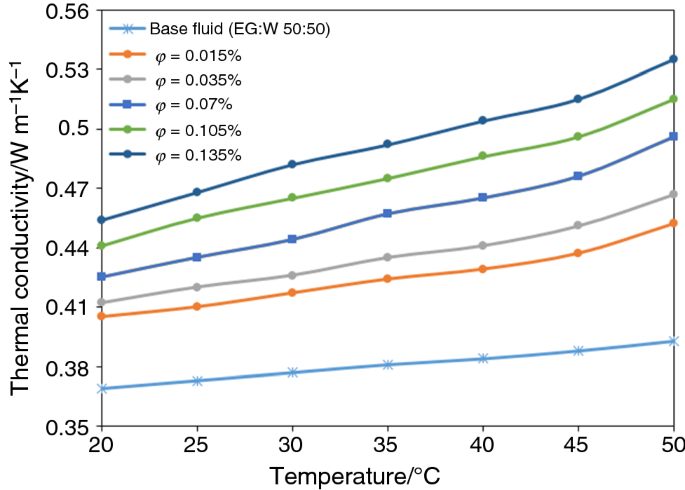


Furthermore, the convective heat transfer characteristics of nanofluids have been one of the popular topics. Based on the results, they showed that even though nanofluids have the same volume fraction, the thermal conductivity of nanofluids is more increased in accordance with suspension stability. They prepared three kinds of Al 2O 3 nanofluids with different particle shapes to make a difference of nanofluids’ suspension stability, and then suspension stability and thermal conductivity of manufactured nanofluids were measured. experimentally showed the thermal conductivity of nanofluids strongly depends on the suspension stability. Since Choi, it has been reported that the thermal conductivity of working fluids can be enhanced by dispersing the nanoparticles and nanofluids’ thermal conductivity can be controlled with geometry of nanoparticles.

One of the solutions is nanofluids which is to disperse the nanoparticles into the basefluid with well suspension stability. To overcome this problem, many researchers have put a lot of effort into enhancing the thermal properties and the convective heat transfer characteristics of working fluids. Especially, the efficiency of cooling system inherently has limitation because the working fluids such as EG and PG have relatively low thermal properties. The efficiency improvement of thermal management system in many industrial fields is one of the most challenging issues. Based on the results, we show that the suspension stability, thermal conductivity, and particle size of EG/water-based Al 2O 3 nanofluids were not affected by low temperature. Also, the thermal conductivity of the nanofluids was measured using a transient hot wire (THW) method in temperature from -10 to 70☌. In addition, the particle size distributions and deformation of nanoparticles dispersed in the nanofluids were measured using a particle size analyzer (PSA) and TEM. The suspension stability of the thawed nanofluids was quantitatively analysed for over a day using a Turbiscan. To investigate the effect of freeze-thaw on the suspension stability and thermal conductivity of nanofluids, the prepared nanofluids were frozen at -32☌ for 24 hours using a refrigerating chamber, and then they were completely thawed at room temperature for 24 hours. The EG/water-based Al 2O 3 nanofluids were prepared using a two-step method with a nanodisperser and decanting processes. This paper reports the effect of the freeze-thaw on the suspension stability, particle size distribution, and thermal conductivity of EG/water-based nanofluids containing Al 2O 3 nanoparticles that can be used as improved working fluid for cooling systems.


 0 kommentar(er)
0 kommentar(er)
